Let’s face it; powerful gaming machines of all varieties are expensive purchases and so it’s best to be as informed as possible when looking at parting with your hard-earned cash. We’ve created this gaming PC vs gaming laptop guide to help you answer the question of which is right for you.
There are many, many variables to take into consideration when it comes to choosing the best gaming PC vs the best gaming laptop. You’ll need to consider where you spend most of your free time gaming, your job, whether you are upgrading from a previous machine, how much you like the idea of DIYing, and how big a concern value is for you. We’ve taken a look at all these factors in more detail so you can be sure that your next gaming machine is the best choice for you.
Historically, the performance gap between gaming laptops and desktops was enormous, and the question of getting a gaming laptop was one of necessity rather than choice. But in recent years, huge strides have been made in performance and efficiency, allowing for performant components to draw less power, generate less heat, and importantly, fit inside a laptop chassis. As such, gaming laptops really can be incredibly powerful and can come equipped with stunning screens too, but there are compromises, so read on to find out what they are.
Why you can trust our advice ✔ At PCGamesN, our experts spend hours testing hardware and reviewing games and VPNs. We share honest, unbiased opinions to help you buy the best. Find out how we test.
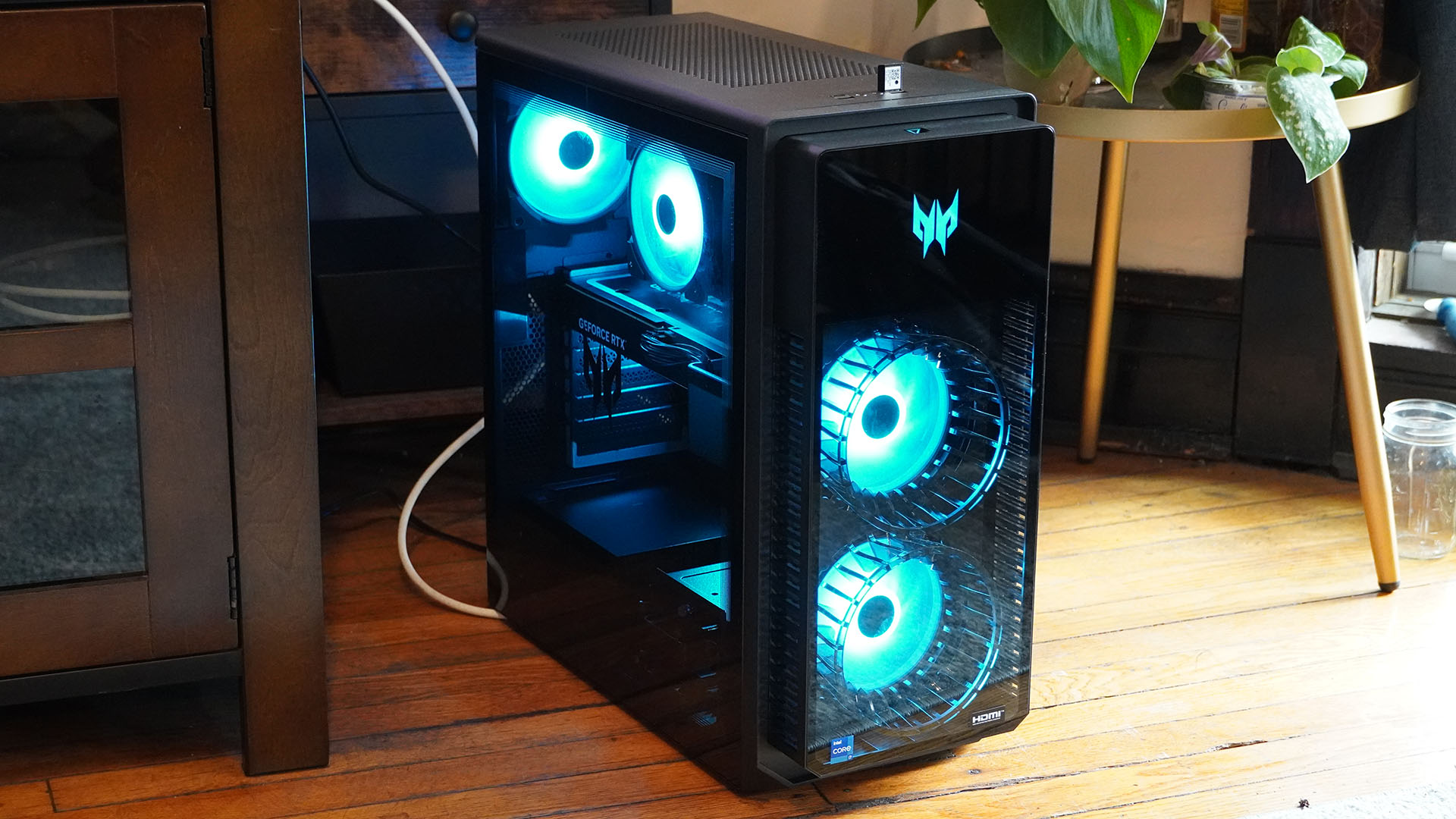
Features
With gaming laptops, the majority of your peripherals are neatly packaged together, which is both a major benefit and their biggest downfall. Buying a gaming laptop gets you nearly everything you need to get up and running, with just a few exceptions. However, as we’ll explore more below, any upgrades you might want to make or any parts that break, might mean having to replace the whole machine. With a desktop, you have to buy a lot of other extras but they’re also easier to replace.
Looking in more detail at the features you do get, the most obvious place to start is your screen. Laptops include one and they can provide stunning picture quality, with them even leading the charge in some ways – OLED screens are quite common on premium gaming laptops now. They’re often very sharp-looking, with even 1080p screens looking good on smaller laptop sizes. Meanwhile, 240Hz screens are now commonplace so you can get genuinely tournament-grade speed as well as stunning visuals.
You can get all that and more – quite literally in the case of screen size – with a desktop gaming monitor, but you’ll have to pay extra. You can get an entry level 1080p, 144Hz gaming monitor for under $150 while 240Hz, 1440p displays are under $250. If you want an OLED screen to match what many mid to high-tier gaming laptops can provide, though, you’ll be looking at spending well over $500.
Elsewhere, one advantage of gaming laptops is they come with a trackpad that means you technically don’t need a mouse, at least for work. However, trackpads don’t cut it for gaming so you’ll be wanting to add one of either best gaming mouse options or another input such as a PC controller, just as you would with a desktop PC.
Speakers are of course integrated into a laptop too, and they can sound quite good, but in most instances one of the best gaming headset options will be an add-on you’ll want to get just as you will with a gaming PC. One factor to consider, though, is that with laptops being more portable, you might want to prioritize one of the best wireless gaming headsets in case you need to close your laptop and run out the door. They’re useful for desktop PCs too but a cheaper, wired headset can serve a desktop sufficiently in most cases.
The wireless factor is also something to consider when it comes to mice too. Opting for one of the best wireless mouse choices is a much more tempting consideration on a system that’s primed to be on the move and where having as few cables as possible is such a bonus.
The desktop can make up for this in spades however with having the freedom to pair whatever display, keyboard, and mouse you want with your machine. You have the full range of the best gaming monitors at your disposal – as you do with a laptop, but then you’re essentially paying for two screens – as well as the the huge array of options that come with choosing a keyboard. Our best gaming keyboard list guides you through the range of keyboard size – full size, TKL, 65%, etc – switch types, keycap styles and more.
For those working remotely, one practical addition that also comes “free” with a laptop is a webcam. While the best webcams available for desktop PCs outclass most laptop webcams, for most video meetings, the webcam included with just about any laptop is fine, so that’s one big advantage of laptops.
A final consideration is that if you start to get the urge to tinker with gaming machine a little more, desktop PCs are much more overclockable, both in terms of the options open to change the speed of your CPU, RAM, and GPU, but also the cooling that you use for those components. Fit a powerful new cooler on your CPU, add a heatsink to your SSD, or add more fans to your case to cool your GPU and you could untap a world of free extra performance. You can check out our best CPU cooler and best AIO cooler guides to find our top picks for taming your CPU.
Laptops can also have overclocking options, but the thermal limitations of these small machines means your headroom tends to be more limited. Plus, there aren’t too many ways to boost their cooling, though devices such as the Razer laptop cooling stand can help. Meanwhile, if you’re actually looking to boost battery life and keep your laptop cooler, you can often undervolt laptops.
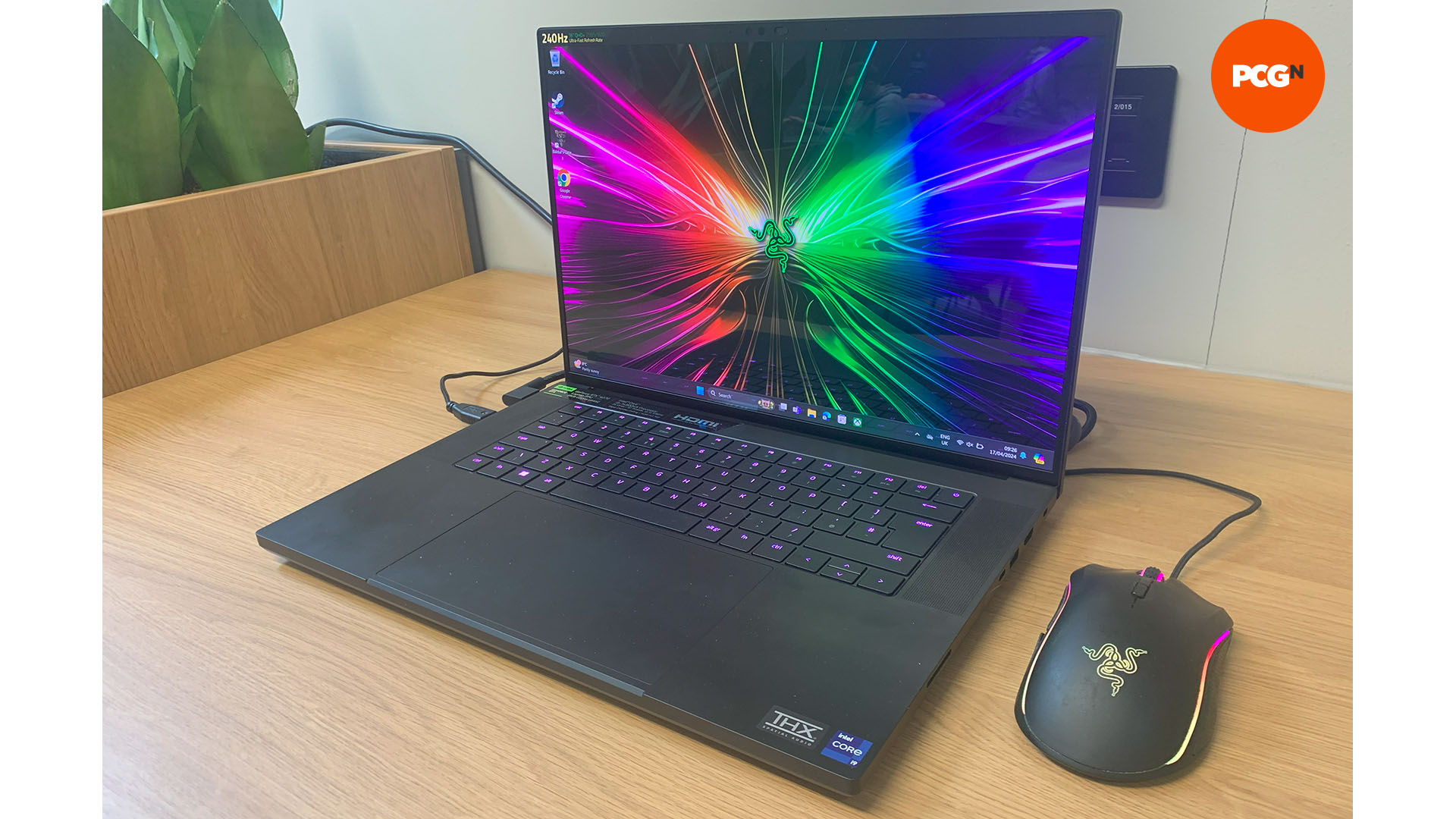
Design
With gaming laptops, you need to pick a design you like and you will be stuck with it until you buy another machine entirely. You can apply skins like those from Dbrand to change the appearance somewhat but that’s about as far as you can go.
However, as far as laptop design goes, there is a lot of choice, allowing you to get a slim, sleek, professional-looking machine or one that’s more outlandish. You can also save money by opting for a more basically-built laptop, instead spending money on what actual matters – the components that come in it.
For those prioritizing a laptop for its everyday portability, you’ll likely want to aim for the class of laptop that tends to be a bit more premium, especially if you want some gaming performance. Slim, well-built gaming laptops are certainly available but, for instance, the 14-inch Asus ROG Zephyrus G14 costs $2,400 while the 16-inch Razer Blade 16 costs $3,000.
Instead, if you’re looking to maximize performance and are happy to compromise on portability, chunkier laptops offer a number of advantages. Larger screen sizes are easier to work with for long periods of time while thicker chassis can accommodate better cooling, larger trackpads, larger keyboards, and better speakers.
While the Asus ROG Scar 18 review that we wrote was using a machine packed with high-end hardware, you can spec it up with much lower grade internals, getting you a large 18-inch screen, full-size keyboard, and more for $2,400.
Meanwhile, the ideal middle ground and most affordable options for most gamers are mid-sized machines (15-16-inch) with basic designs. They can look and feel a bit plasticky, won’t be the slimmest and lightest, and might lack some premium touches here and there but the likes of the iBuyPower Chimera NP5350D 15.6-inch laptop can be had from $1,299 yet still offers a 1080p, 144Hz screen, RTX 4060 GPU and 1TB of storage.
As for desktop PCs, the world is your oyster when it comes to design. As you can see from a quick scan of our PC build hub, there’s almost no limit on how you can choose to modify your PC case and peripherals to suit your needs. However, on a more practical, approachable level, even just picking from the many amazing-looking options on our best PC case guide gets you a huge range of PC case size, shape, color, and more.
Of course, it’s this choice which is where building a gaming PC can get quick daunting but if you follow our how to build a gaming PC guide, you’ll learn all the key steps of choosing your hardware and putting your system togethers. Meanwhile, plenty of system builders offer great options with some fantastic designs, saving you the hassle of building yourself. The likes of Maingear and Origin PC offer a wide range of PCs mostly based on cases and components you can also buy yourself while companies such as Alienware, Asus, Dell, HP, and MSI offer pre-build PCs of their own design.
If space is a concern, you may want to opt for a smaller case where Micro-ATX and ITX motherboards could serve you well. If you are of the opinion that considering the volume of your machine is for mere mortals and you want multiple PCIe slots for all sorts of add-in card shenanigans, then larger ATX or even XL-ATX motherboards might be in order. No matter the size, we’ve got you covered for the best gaming motherboards.
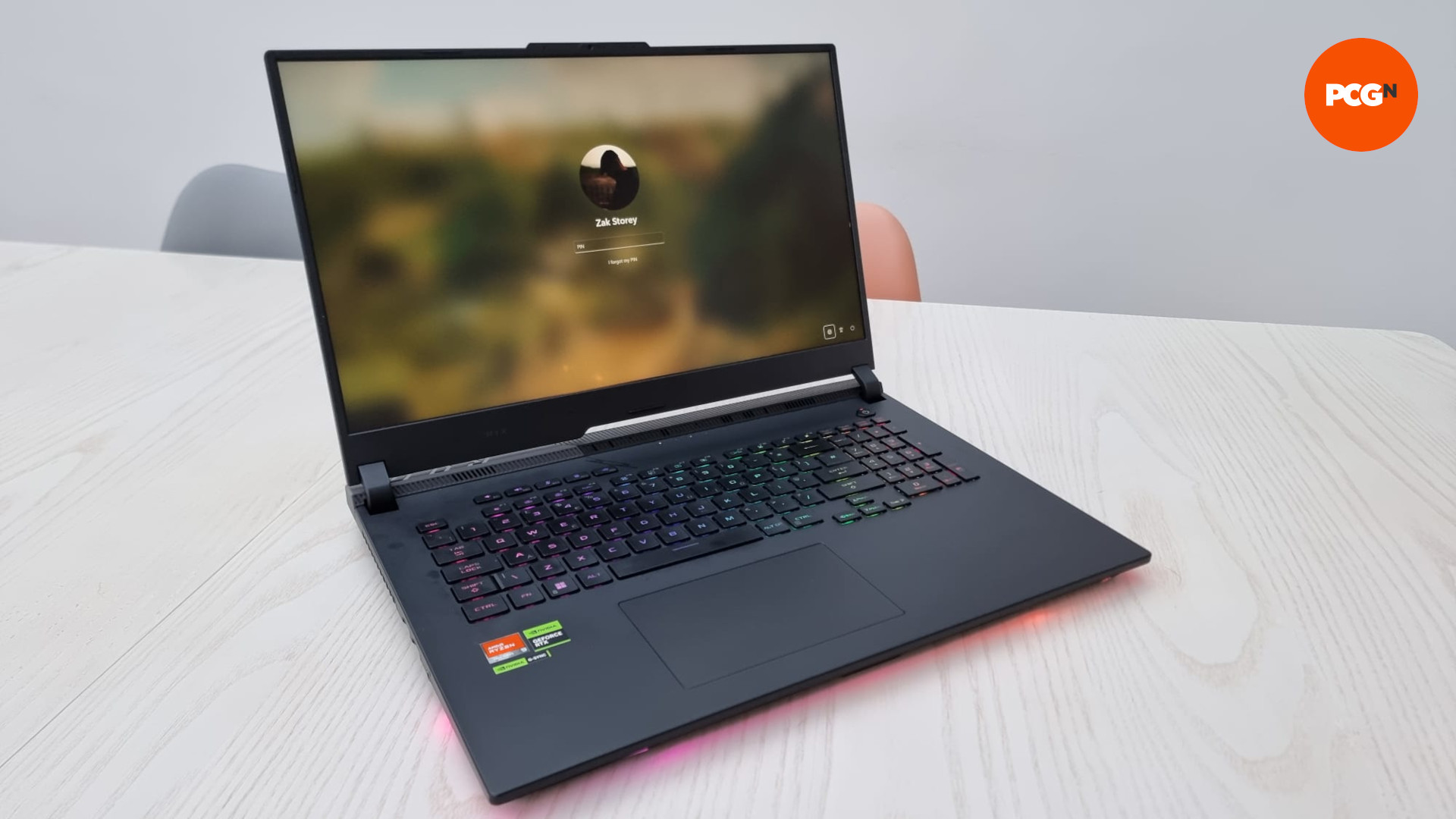
Portability
By their very design, laptops are far more portable than their desktop counterparts. Your computer, monitor, and keyboard are all built into one neat package, with you only really needing to pack the power cable, a mouse, and a headset in your bag.
If you also work from your gaming laptop, this opens up the option of pitching up in a cafe or library for a change of scenery. More modern gaming laptops with more efficient processors can even be used away from the plug for most of a day, especially if you disable the dedicated GPU and reduce the screen refresh rate – which won’t affect your workflow if you’re just reading and typing.
That’s not to say that desktops can’t be portable too. SFFPCs (small form factor PCs) take desktop components and cram them into some seriously small cases with all kinds of funky cable management and thermal considerations, as can be seen in our guide to the best mini gaming PCs, including systems such as seen in our Corsair One i500 review below.
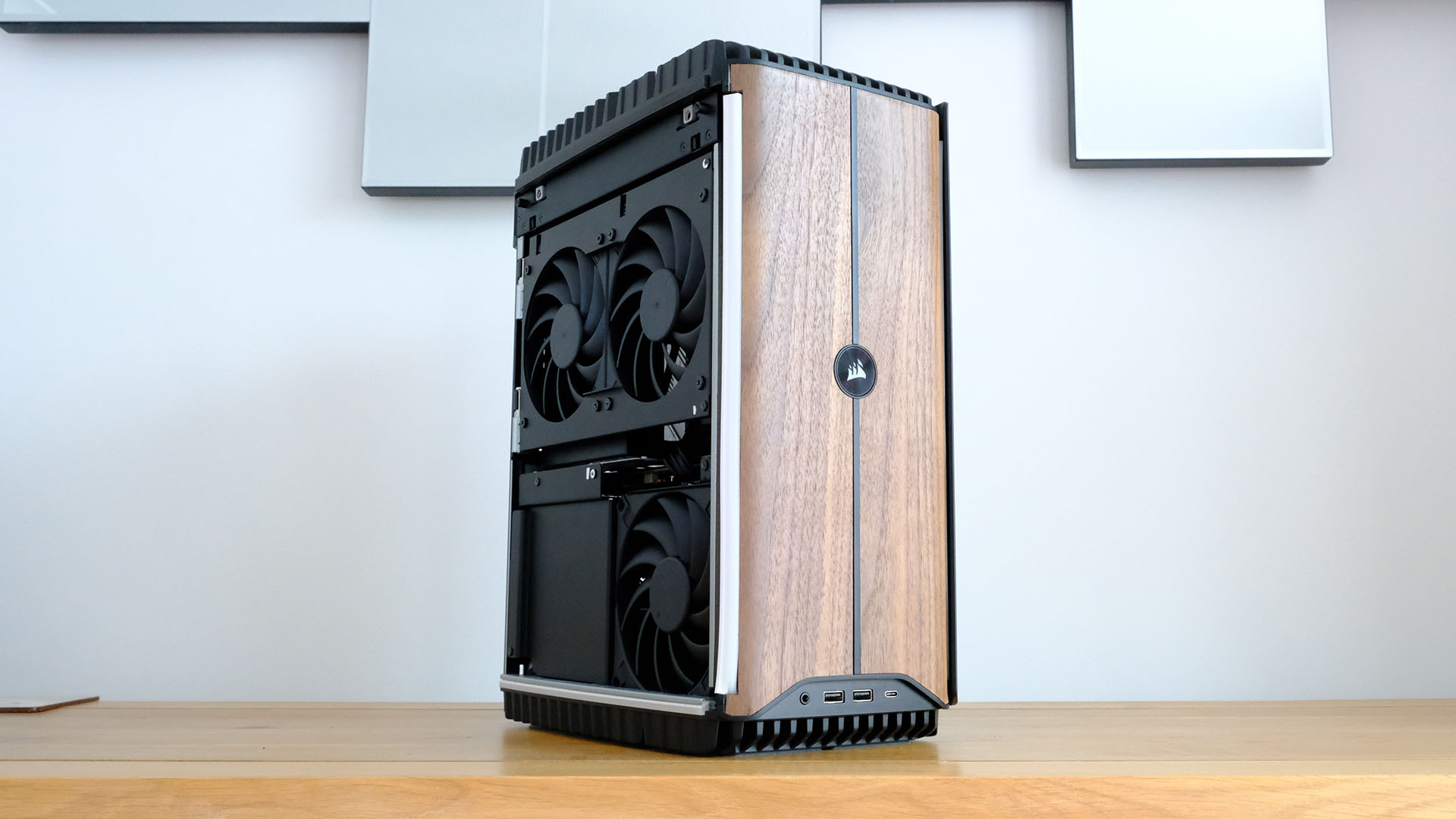
If your moving around considerations are more that you’re in a job that has you moving house quite frequently or you’re in a dorm and will be moving next year, a small gaming PC is still going to be portable enough for easy occasional moves.
Game Performance
Due to the thermal and power restraints of laptops, desktops are always going to come out on top for game performance – even more so the higher up the stack you go. For example, an Nvidia RTX 4090 has an official power draw of 450W, whereas a laptop-based mobile RTX 4090 can draw ‘only’ up to 175W.
The deceptively named mobile RTX 4090 is actually based on the same AD103 chip that the desktop RTX 4080 uses, so despite sharing its namesake, it contains far less processing power – 9,728 CUDA cores vs 16,384. As such, in our tests we see the desktop 4090 pulling ahead by around 35-50% depending on the game.
On the upper end of the AMD scale, there are currently no mobile equivalents for the 7900 XT and XTX, yet, but if we look at the previous RDNA 2-based RX 6000 series, the performance delta between the top-end laptop-based RX 6850M XT and upper mid-range RX 6800 XT was about 30-40%.
This is at the absolute top end of the scale however and most gamers are interested in the midrange where you see much lower power consumption. The RTX 4060 Ti for instance has a TDP of 160W which is close to the maximum 175W (including dynamic boost) you typically find in laptops. Laptops don’t have as comprehensive cooling, though, so you can expect to see lower clock speeds to keep your machine from burning itself up.
In short, the less power a desktop GPU requires, the closer the equivalent laptop GPU can be in terms of performance, so you may feel like you’re leaving less money on the table for opting for a mobile sweet spot further down the product lineup.
Mobile GPUs are certainly no slouch these days, though, and if you choose the right level of performance you need for your games, you’re bound to have a great experience, especially with the proliferation of new technologies such as DLSS, FSR, and XeSS which help our games go further. Just be sure to ensure you have enough VRAM to play your favorite games. These days we generally recommend a card with at least 8GB.
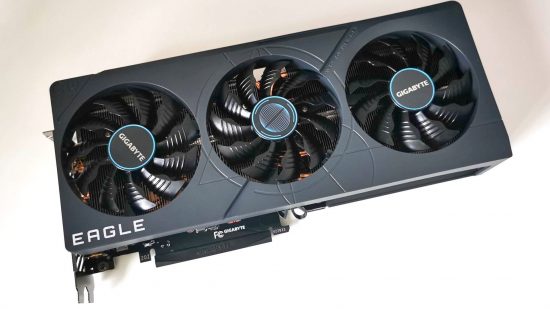
Upgradability
Your options for upgrading a laptop are more limited than with a gaming PC, to say the least. At most, you can expect to be able to replace the battery, Wi-Fi module, RAM, and storage, though many modern laptops have their memory soldered in place, rendering this upgrade impossible for home users.
One laptop we’ve recently reviewed that is upgradeable is the HP Omen 16, which has two available slots for RAM and two M.2 SSD slots too, allowing you to save money by opting for a lower memory and storage option and upgrading them yourself if and when they’re needed at a later date.
In general, the larger, more powerful a gaming laptop, the more upgradeable it’s going to be, as components being soldered to the motherboard of a laptop is primarily a space-saving solution. As such, if you’re looking to get a very slim, light laptop, there’s a higher chance it’s memory won’t be upgradeable. One such example is the Lenovo Legion Slim 5. It’s a great laptop but its RAM is fixed.
Desktops, meanwhile, are completely upgradeable by their very nature, except for some pre-builds, which feature proprietary components that are difficult to upgrade. Companies such as Alienware have fallen foul of this before. However, it’s upcoming 2025-edition Area-51 desktop PCs have reversed this trend with now fully-upgradeable, standard parts, as you can see in the image below.
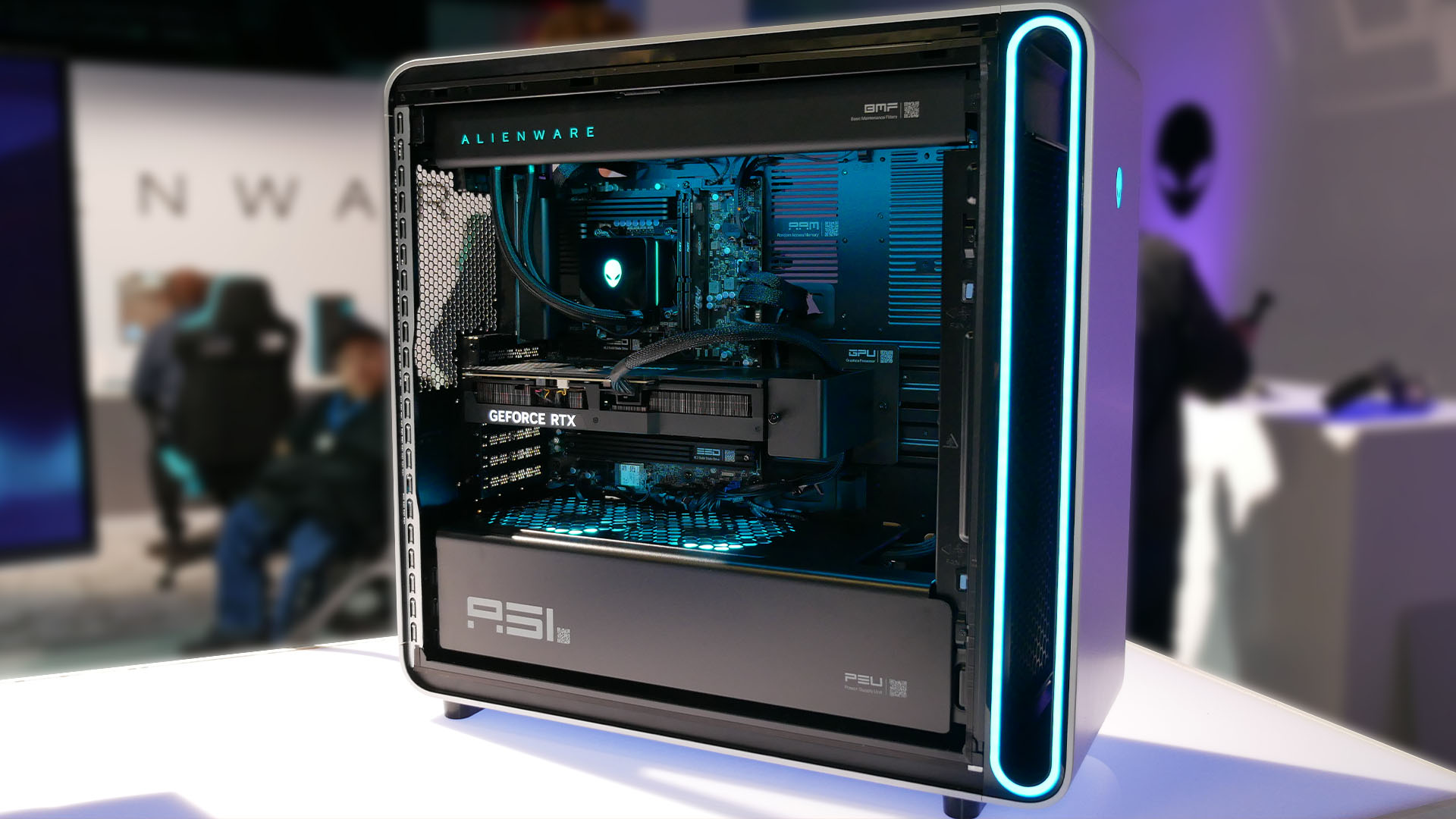
Your best bet for ensuring you get an easily upgradeable gaming PC with standard parts is to shop with a system builder, such as iBuyPower, Maingear, and Origin PC. In contrast, you’ve a higher chance of a PC having some less-upgradable components if you shop with a maker of off the shelf PCs, such as Asus, Corsair, Dell/Alienware, HP, and Lenovo.
Meanwhile, for the ultimate in upgradability, you can of course build a gaming PC yourself. By picking and choosing exactly the right components for your needs, with a view ahead of how and what you might upgrade, you can clear the path for some great value performance bumps in the future. If you’re unsure of where to start, though, check out guide on how to build a gaming PC for a complete step-by-step walkthrough of the process.
Value for money
The best value option out of a gaming PC and a gaming laptop is going to depend on what gear you already have and what level of performance you’re looking for from your system. If you’re starting with nothing and just want a modestly-powerful system, a gaming laptop is actually going to be your best very option.
Because gaming laptops come with a screen, keyboard, mouse, webcam, speakers, and more, you’re effectively saving the cost of buying all those components. You can buy a really entry level keyboard, mouse, and monitor for under $250 but that’s still an extra $250 you could spend on a better gaming laptop.
To see just how the books balance when starting from scratch, we’ve provided an example of a mid-range gaming laptop versus a shop-bought custom PC below. Both of these are available via iBuyPower, with them configured to be as close as reasonably possible.
| PC | iBuyPower Chimera | iBuyPower – custom PC |
| GPU | Mobile RTX 4060 8GB | RTX 4060 8GB |
| CPU | AMD Ryzen 7 8845HS | AMD Ryzen 7 7700X |
| RAM | 1 x 16GB DDR5-5,600MHz | 2 x 8GB DDR5-5,200MHz |
| Display | 15.6-inch 1,920 x 1,080 IPS, 144Hz | NA |
| Storage | 1TB Teamgroup Gen 4 M.2 NVMe SSD | 1TB Teamgroup Gen 4 M.2 NVMe SSD |
| Motherboard | Integrated | MSI PRO B650-P |
| Keyboard | Integrated | NA |
| Webcam | Integrated 2MP FHD | |
| Total | $1,449 | $1,475 |
You can see that even though there are a few differences, these two systems offer similar on-paper specs but the laptop is actually cheaper while the PC doesn’t include any peripherals so that you can actually use it.
However, of course, if you already have some of those peripherals, you can take advantage of what is going to be noticeably better performance from the desktop PC. The laptop will be a solid option for 1080p gaming with medium detail settings in most games but the desktop will be that bit faster across the board.
You can see just how much this difference can be in two of our recent desktop and laptop reviews. We tested tested a mobile RTX 4070 in our Alienware M16 R2 review and it managed an average frame rate of 43fps in F1 2023 (ultra detail with ray tracing), whereas our desktop RTX 4070 tests (from our RTX 4070 Super review) show that card hitting 64fps in the same test. That’s nearly a 50% performance improvement going for a desktop option.
Meanwhile, once you get into higher-end hardware, the difference in performance and rising cost of high-end laptops erodes the value of a gaming laptop further. The highest GPU performance option you can get for a laptop is a mobile RTX 4090, which will generally set you back around $3,000 for the laptop, yet that card is outpaced by a desktop RTX 4070 Ti Super, which you can spec into a desktop PC for less.
The final value consideration is of course upgrades. If you’re at all thinking of future upgrades you might make, a PC wins every time, as we highlight above. The fact you can transform your PC’s gaming performance in most cases just by upgrading your graphics card means you can keep everything else in your system. A CPU and RAM upgrade could involved swapping motherboards and a really big leap in GPU performance might require a new power supply, but generally you can get away without changing much else at all.
With a laptop, to get a big graphics or CPU performance upgrade, you have to swallow the cost of selling you old machine and a significantly reduced price and buying a whole new laptop.
Conclusion
Ultimately, the decision between the best gaming PC and gaming laptop comes down to what you need your machine to do for you. If you spend a lot of time away from home and need portability, then a gaming laptop is always going to be the best choice for you.
If you’re a homebody and want to get the absolute best bang for your buck when it comes to performance, then a desktop is going to offer you the best flexibility when it comes to pricing and mixing and matching components, and overclocking.
One consideration that is becoming even more viable these days, though, is to shift your gaming onto a handheld gaming PC, such as a Steam Deck or Asus ROG Ally. These systems offer a really convenient gaming with several hours of gaming battery life – often far longer than a gaming laptop can manage – yet are relatively affordable. Match one of these systems with a slim and light, non-gaming laptop for work and you could save money overall and get a better overall experience. With the Lenovo Legion Go, you can even set it up as a mini gaming PC plugged into a TV, thanks to its detachable controllers.
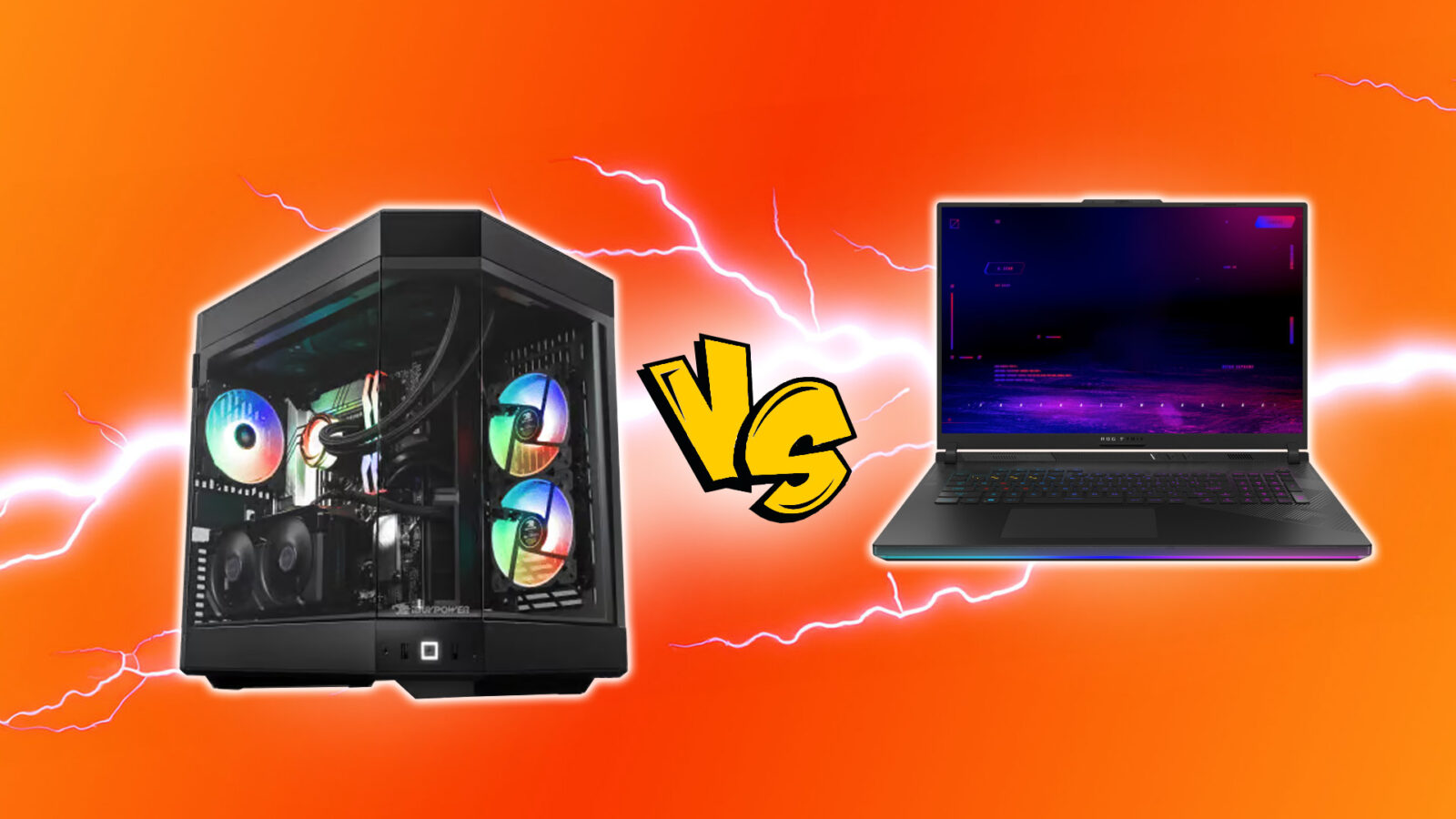






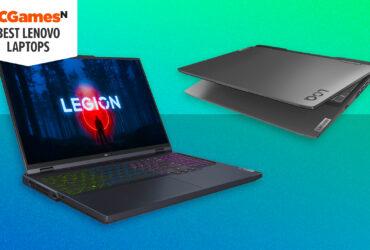



Leave a Reply